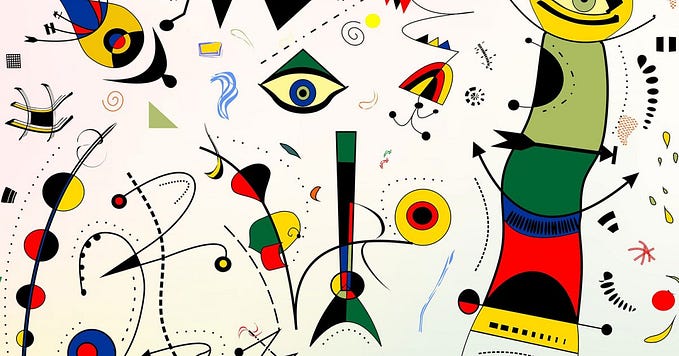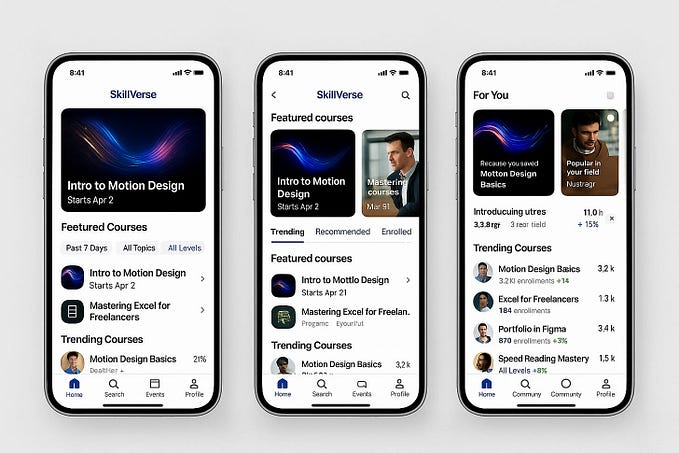
Your Day
The first step to seizing your day is being able to see it
You’re reading about an early prototype of HQ — the operating system for your daily life. HQ is being built in public and various aspects of the application and/or this blog post could change. For more information, visit twitter.com/gotomyhq
The centerpiece of HQ is the Day. The goal here was to build a page that a user could use just like a daily journal, but in a digital form.
Sort of like this, but digital.

Physical journals are great, and many people use them (including me) for a variety of purposes. Some are like the above and have sections with prompts to guide the user and provide structure, while others are free form with either dots (my preference) or lines or even blank paper.

The Day Page
The goal with the Day page in HQ is to recreate the best parts of the physical journal, but in a digital form. It looks like this (below). The center column has prompts for what should go in your journal today, while the left sidebar has tabs to quickly jump around to other days. We’ll cover the right column in a minute.

Day Page Sections
Each day has various sections that allow for text input or that connect to other activities done throughout HQ. For privacy and ease of viewing, each section is closed when you first load the page, but clicking on any one section will reveal its contents.

Free Form Text
In some sections, there is a space to write something, just like you would in a physical journal.

Linked Records
In other sections, it displays links to records from other places in HQ.

This is an important point. Traditional journaling or todo list software allows us to write ideas and to list things we want to do, but we can only create text. There’s no concept of linking from one thing to another thing, which itself has its own structure and more data. Thus, if you want more context on a particular thing you’ve written down, there’s no way to get it.
HQ is different. It shows the user linked records from other sections of the app (there will be an additional post on each of these), and provides important context on that thing. For example in a traditional ToDo list I could write down the task “Call Dave Koslow” but this task doesn’t provide me any context, such as when did I last speak with Dave and what did we discuss? How often have we spoken? What’s his contact info?
Linked records solve this problem. When I click on a linked record, HQ shows me additional information about that thing in the right sidebar.

Right Sidebar
The right sidebar displays data from linked records not only for contacts, but for other data types across HQ as well:
Habits

Tasks

Meals

Workouts

Paper Notes
No matter how much our world moves to digital, there are certain things where analog tools such as pen and paper are just better. They’re fast, entirely free form, require zero battery power, and don’t need a wireless signal to work. But then there are other areas where digital is clearly superior. So which should we choose?
For HQ users, it’s not an either/or, it’s a “yes” to both. For most activities a person does in 2021, the digital functionality of HQ with its linked records is going to be much easier and faster to use. For other things where paper is preferred, users can simply take a picture of a paper and add it to their day. This preserves the notes or papers the person created that day, but makes them more discoverable as time goes on.

You can make the paper larger too so no detail from the original is missed. In my testing, the digital copy of the paper stored on HQ is almost better than the original.

Metrics
Lastly, as a person goes about their day, they’re doing numerous things, and HQ tracks these activities automatically as you interact with the app.
If you study the practices of peak performers, a common theme emerges: they all keep track of what they do. The reason: so they can do it better the next time!
Originally, I had planned to display these metrics on the Day page, but as the number of metrics being collected grew, it became easier to have a dedicated page just for this purpose — the Dashboard. More on this in a later post.

Mobile
Development of a proper mobile app is underway, but you can already do some of the things there that you can do on the desktop version. More on that in a later post.
Summary
The design objective of the Day page is to have a single representation of all of a person’s daily activities.
- It needs to be powerful, but not visually overwhelming
- It needs to be scannable so a person can use it to quickly find what they’re looking for
- It needs to provide more info about a thing when the user wants to drill down further
- It needs to combine the best elements of a physical journal and digital one all into one
- It needs to serve not only as a list of prompts for a person to navigate their current day, but also be a historical artifact looking back of what things a person did on past days.
But doing all this still isn’t enough. To be truly transformative, HQ needs to help a person actually be better, in whichever ways they define. My thesis, born out by a lot of research and experience over the years, is that in order to achieve great things, we all need to have systems that we rely on to help us get there. Until now, we had to create those systems, and that was always difficult or impossible. With HQ, it’s far less of a challenge. In turn, I believe HQ will empower more people to achieve more things in their lives, and they’ll have a record that shows that they did it!










